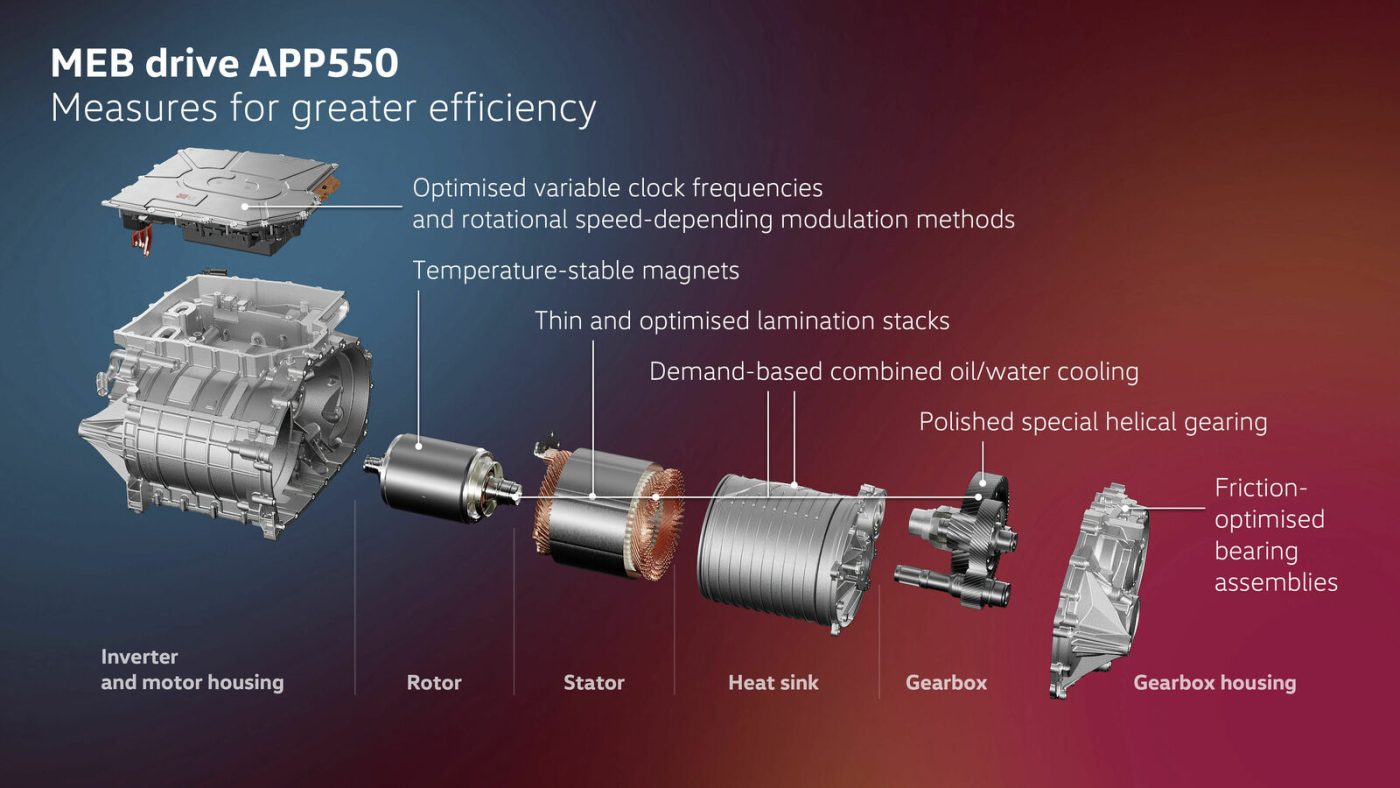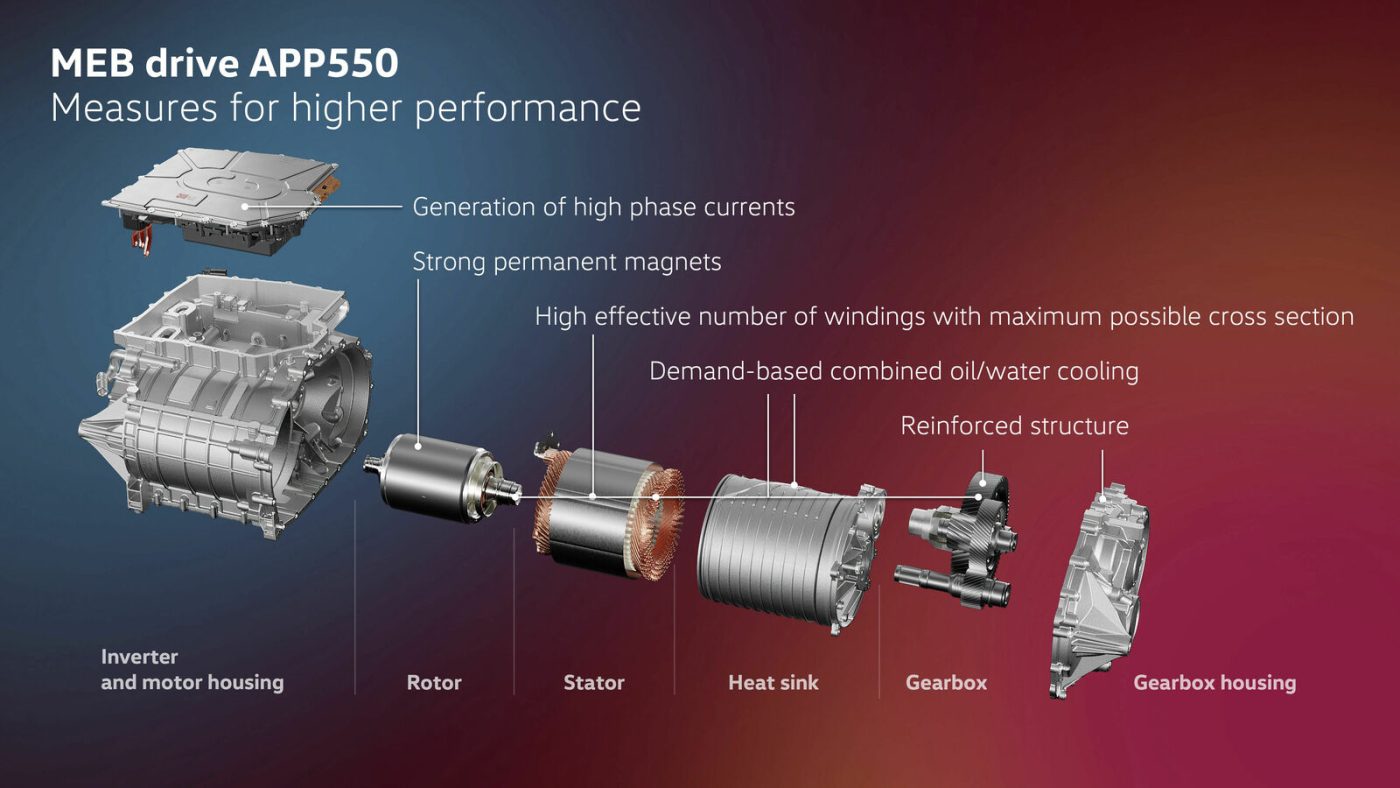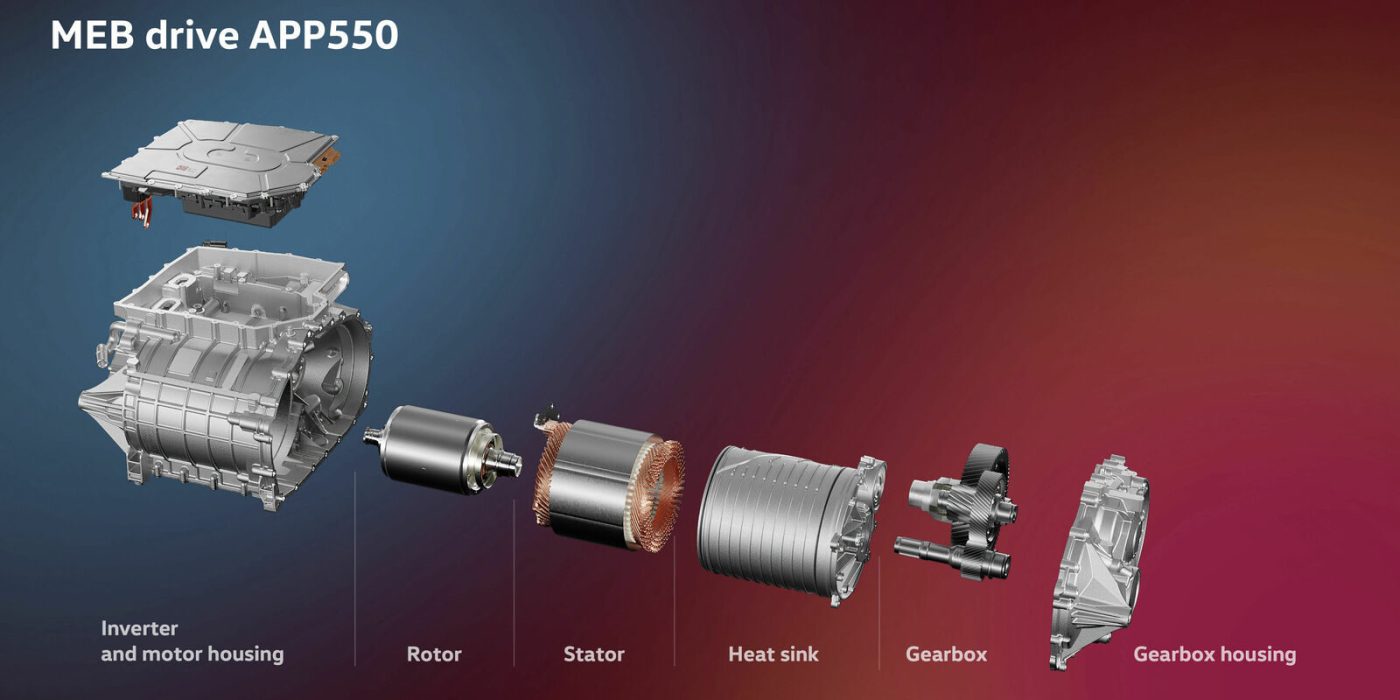VW reveals first details of new MEB drive system APP550
Volkswagen has unveiled a new generation of drive units for the Modular Electric Building Kit MEB. The rear-axle drive APP550 comprises a completely newly developed power unit – which is supposed to offer more power with improved efficiency at the same time.
Attentive readers will already be familiar with the APP550: This drive unit has been manufactured by VW Group Components in Kassel since mid-March. Since then, the key data have also been known – the drive unit is to deliver up to 210 kW and the eponymous 550 Nm of torque. As is well known, the engine variant used in most MEB models so far has a power output of 150 kW and 310 Nm. When VW published pictures of the last test drives of the ID.7 before its world premiere at the beginning of April, the efficiency of the new electric drive system was emphasised above all.
Now the Wolfsburg-based company has revealed a few more details. The familiar design with the pulse inverter integrated into the motor housing, rotor, stator, cooling jacket, gearbox and gearbox housing remains. However, all components have been further developed. The APP550 achieves the high torque of the electric drive through an improved stator with a high effective number of windings and a larger wire cross-section – at the same time, thin and optimised laminated plate packages are to increase efficiency.
The rotor is equipped as a counterpart with a stronger and higher-capacity permanent magnet. The drive has been reinforced to cope with the resulting torque. To improve performance and efficiency, the pulse inverter (or inverter) has also been adapted – according to VW with a view to “providing the high phase currents”.


Another lever to increase efficiency is thermal management. In the cooling system of the drive unit, the engineers have completely dispensed with an electrically driven oil pump (which would of course have consumed electricity itself). Instead, according to the press release, the system can “cool itself via the gear wheels of the transmission as well as specially shaped components for transferring and distributing the oil”. In addition, the stator has a water-cooling jacket. The combination of these two systems as needed is said to be the basis for a further improvement in efficiency – however, this is not precisely quantified in the communication.
In addition, there are optimisations in classic mechanical engineering: polished and specially shaped helical gears are to further reduce losses in the gearbox, and there is also a friction-optimised bearing in the gearbox housing.
“Because the available space has not changed, we were compelled to develop a new drive that achieves significant improvements in performance and efficiency in spite of being subject to the same constraints,” says Karsten Bennewitz, Head of Drive and Energy Systems in Technical Development. “That was a great challenge for the team of Technical Development and Group Components. The result shows that we were able to reduce the use of raw materials, while at the same time achieving a considerable increase in vehicle efficiency.”
As a result, the ID. models (and also the MEB vehicles of the other Group brands) should be able to achieve a higher range with the same battery size. VW only confirms that it will deliver “the first vehicles with the new drive generation in a 210 kW (286 hp) variant” probably from the end of the year. No specific models are mentioned, but the new ID.7 is likely to be among the first series – possibly a rear-wheel-drive ID.3 GTX will also receive this drive variant later.





0 Comments